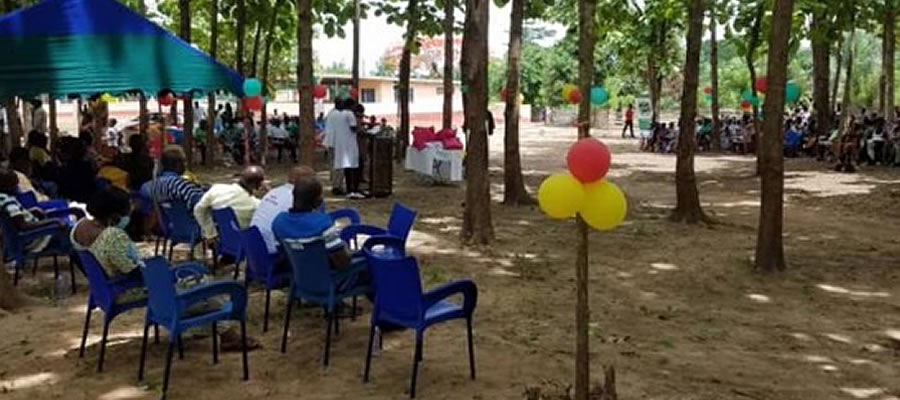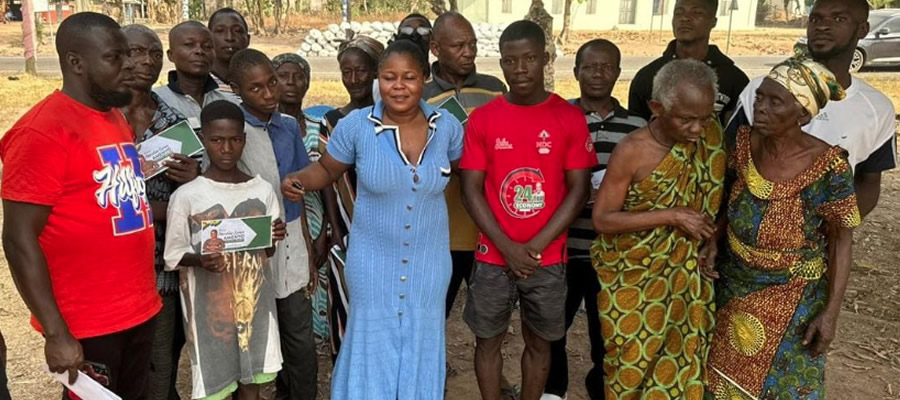

Vulnerability
Conditions resulting from factors as stated above can be described as characteristic of a state of poverty. Poverty here is defined as the inability to attain a minimal standard of living. This definition is applicable to an individual as well as a community. However, in the case of the individual, and in the Ghanaian context, a person is categorized as poor if he obtains an income which is 2/3 below the national average minimum income.
Hohoe Municipal has a large rural population eighty percent (80%) who depend mainly on agriculture. The incidence of poverty is largely felt in the rural areas and within the Agricultural Sector and for this reason, the Municipal faces a huge problem in alleviating poverty. The Municipal has 26,275 hard core and 42,695 poor whose conditions are reflective of the social welfare indicators. The percentage of the poor to the Municipal’s population (29.7%) is quite alarming and calls for an urgent effort to address the situation.
The average monthly consumption per capital for the Municipal is as very low. The poor spend all their income in any one particular year. At least 63% of this consumption is on food and this immediately
indicates its impact on nutritional status. Within the households, the distribution of consumption often favors males and income-earning adults. Women are at a disadvantage even though they are potential medium in the nutritional upkeep of their families.
The poor of the Municipality have distinctive sources of livelihood and these include a mix of different earning activities viz: as Cultivators/Gatherers, as Hunters and as wage earners (who hire out their labor) and as Petty Traders or artisans. The levels of income attracted by these groups are so minimal that the implications of this factor on development, cannot be impressive.
With 80% of the population in the rural areas, agriculture has become their main source of income. Rural non-farm employment includes Cottage Industries, Personal services and Petty Trading.
These are however seasonal or part-time. Earnings from these sources are low and these are attributed to the fact that products from these sources are of lower quality intended for home consumption or the local market. For such reason, demand is an important constraint on the non-farm economic activities. Gatherers staving of the forest products are also up against environmental protection laws. Transfers/Remittances have been an important source of income, which help to cushion off the harsh economic situation of the poor.
It is not the intention of this study to paint a static picture of poverty in the district. That will be deceptive. Evidence indicates that some people move in and out of poverty while others are permanently stuck in. Households have therefore adopted various strategies to reduce the risk poverty causes by diversifying their sources of income. Credit is rarely available for accumulating assets. The only assets that have been freely available to the poor are labor and at times access to land. These have however been variously affected by the following;
- Inadequate human capital that eventually makes the poor become limited unskilled work.
- Unhealthy conditions, which cannot ensure their capacity for labor, and eventually be forced to rely on charity.
- Ageing and incapacitation thus depriving them of the change to offer their labour and eventually be forced to rely on charity.
- Lack of ownership rights which forces the poor into hiring out their labour or go in tenancies, which cannot provide collateral or secure a hedge against risk.
As a result of the above, savings and borrowings have often been held in unproductive forms such as cash or grain to hedge against future calamities. The poor have not had the opportunity to use credit and savings to booster their capacity for bearing risk or to become entrepreneurs. The majority of the populations who live off agriculture are also poor whose main source of income is agriculture. The main enterprise of the poor has been the family farm, which has not developed alongside the other sectors of the economy.
The initial boost achieved by the family farm in taking off from subsistence into commercial farming could not be sustained because the existing structure and method of operation of the family farm could not cope with the changing service supply and activities as well as the technological modernization.
The family farm reached a crossroad where the cornerstone issue was expansion and increase of the farm enterprise and its related services. This meant that production increased to meet market demand; it meant the introduction of new products; it presupposed increased capacity to store, transport and process. In fact all production and service operations were to be designed with efficiency that will cope with the economies of scale.
When the family farm could not have the service of the supporting system, it declined to the extent that the poor, who own them, has now less access to publicly provide goods and infrastructure and in certain situations have been denied the chance to use the services out of their poverty.
Employment
The economically active population determination was confined to the age groups 15 and above. The study is not unaware of the existence of child labour but has deliberately excluded them since the phenomenon is a product ofunder-development and poverty circumstances (see table 4) and is socially unacceptable. The dependency ratio is 2.7 (ie. for every worker there are 2.7 persons who do not work and depend on him).
The Municipal has a low per capital income and this further depresses the standard of living of the population. The natural phenomenon associated with mobility of labor as efficiency improves in the primary sector of the economy and as technology advances does not pertain to the district and this reason underlies the 70% of the labor force still in agriculture.
Gender Issues/Vulnerable Groups
Women constitute 47% of the Municipal’s labor force and forms the majority of the population (52.8%). With the households headed by women forming 31.1% and the fact that most of these are engaged in farming as their main source of income, the incidence of poverty is high in this group. The situation of those in the incapacitation and the aged bracket are actually vulnerable.
ECONOMICALLY ACTIVE POPULATION | ||||
Gender Participation |
Male
| Female | ||
Age Group | Rate of | EAP | Rate of | EAP |
15 - 19 | 70% | 5067 | 50% | 3018 |
20-24 | 85% | 3366 | 60% | 2854 |
25-59 | 95% | 17009 | 71% | 17609 |
60 + | 60% | 3247 | 40% | 2011 |
|
| 28689 |
| 25492 |
Date Created : 11/21/2017 1:57:29 AM












 facebook
facebook
 twitter
twitter
 Youtube
Youtube
 +233 593 831 280
+233 593 831 280 0800 430 430
0800 430 430 GPS: GE-231-4383
GPS: GE-231-4383 info@ghanadistricts.com
info@ghanadistricts.com Box GP1044, Accra, Ghana
Box GP1044, Accra, Ghana